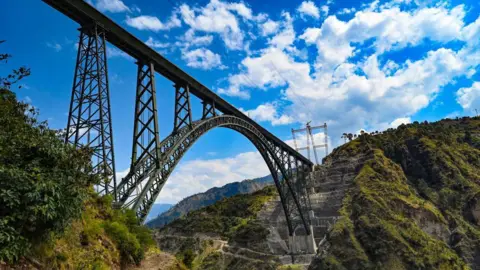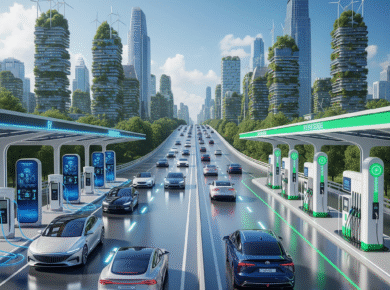India Inaugurates World’s Highest Railway Bridge: A New Wonder of Modern Engineering
Introduction
India has just rewritten the history books by unveiling the world’s highest railway bridge — the Chenab Bridge in Jammu & Kashmir. Towering at a height of 359 meters above the riverbed (35 meters taller than the Eiffel Tower), this awe-inspiring structure is more than just a bridge; it is a symbol of unity, engineering excellence, and national pride.
In this blog, we’ll explore the bridge’s mind-blowing facts, why it matters, and how it shapes the future of Indian infrastructure.

What Makes the Chenab Bridge Special?
1. World Record Height
The Chenab Railway Bridge is now officially the highest railway bridge in the world, surpassing China’s Beipanjiang Bridge.
-
Height: 359 meters (1,178 feet) above riverbed
-
Length: 1,315 meters
-
Location: Between Bakkal and Kauri in the Reasi district of Jammu and Kashmir
Source: Press Information Bureau
2. Engineering Marvel
Constructed in a seismic zone and rugged Himalayan terrain, the bridge showcases India’s civil and structural engineering capabilities.
-
Steel Arch Span: 467 meters — longest span for a railway arch bridge
-
Resistant to Earthquakes and Blasts
-
Life expectancy: 120 years
Source: Konkan Railway
The Journey: How It Was Built
A Vision 20 Years in the Making
-
Foundation laid: 2004
-
Main arch completed: April 2021
-
Trial runs began: 2023
-
Official inauguration: 2025
Over 1,300 workers and 300 engineers toiled day and night in extreme weather and tough terrain.
Source: Hindustan Times article
Also read: NDTV Report
Why Is This Bridge Important?
1. Boosts National Connectivity
The bridge connects Katra to Banihal, enhancing connectivity between Kashmir Valley and the rest of India.
Project Map: en.wikipedia.org/wiki/Chenab_Railway_Bridge
2. Strengthens Defense Access
Being close to the LOC (Line of Control), it helps defense forces move efficiently during emergencies.
3. Promotes Economic Growth
Increased tourism, trade, and employment are expected to follow, giving the region a much-needed boost.
Source: Economic Times
Human Stories Behind the Bridge
“We never thought trains would ever reach our village,” says Amina, a resident of Kauri.
“My son now dreams of becoming an engineer after seeing this bridge rise every day,” shares a proud father from Reasi.
These stories reflect how infrastructure can spark hope and ambition.
Environmental & Safety Measures
Despite its massive scale, the bridge was built with care:
-
Wind tunnels were used to test for high-speed valley winds.
-
Seismic buffers ensure safety during earthquakes.
-
Special corrosion-resistant steel was used to survive harsh Himalayan weather.
Technical Summary: indiarailinfo.com/blog/post/5037691
What Lies Ahead?
The Chenab Bridge is part of the Udhampur-Srinagar-Baramulla Rail Link Project (USBRL), aimed at fully integrating Kashmir with India’s rail network.
Project overview by Northern Railways: nr.indianrailways.gov.in
Once all sections are operational, tourists, students, and traders can reach the valley in less than half the time it currently takes.
Quick Facts at a Glance
| Feature | Details |
|---|---|
| Height above riverbed | 359 meters |
| Length | 1,315 meters |
| Location | Jammu & Kashmir (Reasi) |
| Type | Steel Arch Bridge |
| Built by | Indian Railways (Konkan Railway) |
| Year of Inauguration | 2025 |
A Monument to Progress
India’s Chenab Bridge is more than just steel and concrete. It’s a vision realized, a dream connected, and a landmark achieved.
It inspires engineers, empowers locals, and showcases India’s ability to achieve world-class infrastructure feats under extreme conditions.
As Prime Minister Narendra Modi rightly said during its inauguration:
“This bridge is not just a physical link but a bridge to a brighter future for Jammu & Kashmir.”







